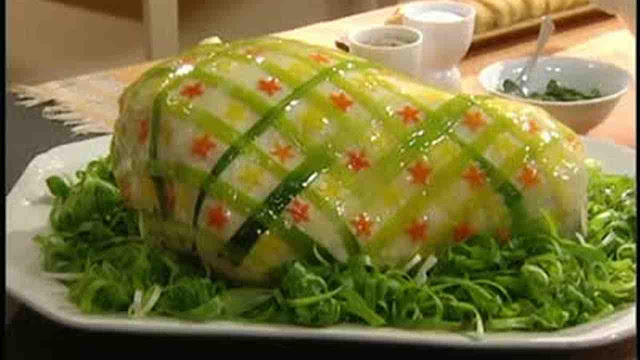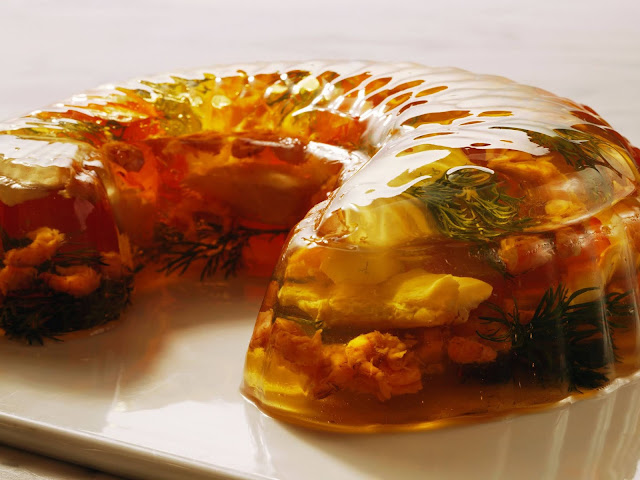Chaud-froid

Chaud-froid Chaud-froid Chaud-froid (pronounced "show-FRWAH") is a word that has two meanings in the culinary arts. Originally, it referred to a dish of cooked chicken which was then cooled and bathed in a jellied sauce made from its cooking liquid. Today, the word chaud-froid is mostly used to describe the sauce itself, which is a simple enough preparation that involves adding gelatin to a velouté sauce (a sauce made from a base of chicken stock thickened with roux ) and is mostly used for decorating serving platters. That jellied chicken dish from which the sauce gets its name is so much more interesting. First of all, chaud-froid is a French term that translates literally to "hot-cold." The reason for this curiously contradictory name is obscured by the fog of the culinary origin story , examples of which tend to represent either the "fortuitous mistake" genre or the "demanding master" genre. This latte...



